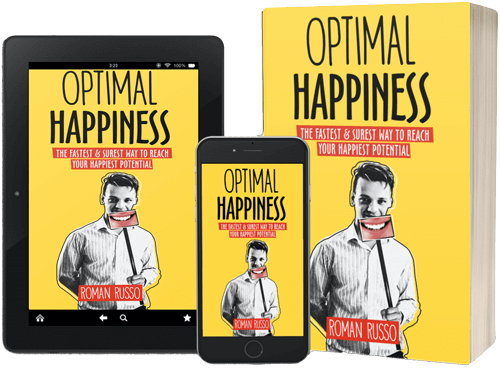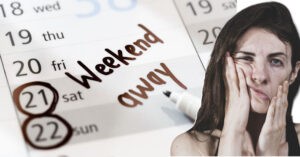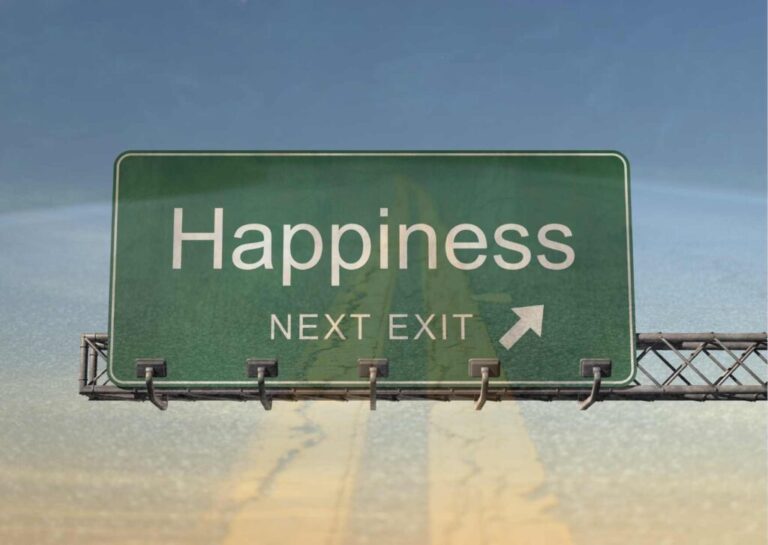
Trust me, I’m a happiness coach, and developing a sense of humor is an essential part of a happy existence. To this extent, for over 10 years, I have been teaching my clients that one important key to happiness is developing a healthy sense of humor, which we should do for ourselves first and others second.
However, it has come to my attention that some people don’t naturally have a good sense of humor and they don’t know how to develop one. Conversely, they are often quite grim and unhappy. So, the logical question became how to develop a sense of humor?
After studying comedy and trying to understand what jokes work better than others, I came up with a 6-step formula that today I teach to my clients whenever I find that they need a little bit more humor in their lives. These 6 steps to developing a sense of humor are:
Step 1: Laugh at yourself
“One time, I fell from a horse!”
Most often, when people don’t use enough humor, it is because they are taking themselves too seriously, thinking that somehow it’s cool. However, from the perspective of happiness coaching, serious people are often unhappy and they are just hiding behind the mask of seriousness trying to convince themselves and others that everything is alright when it isn’t.
A solution for this “seriousness” is to laugh at oneself. If we can make fun of our own faults, insecurities, and shortcomings, it defuses negative energy around our vulnerability and we find the strength to admit that we aren’t perfect (no one is perfect!) and we (everyone) have something to work on and improve. This logic contributes to personal growth, which isn’t possible if people are living in “serious” denial.
Learning to laugh at yourself is the first step to learning how to develop a sense of humor. If we can’t laugh at ourselves, it is unlikely that we will be able to fully grasp the extent of the next happiness lessons, never fully developing a healthy sense of humor.
Step 2: Exaggerate everything!
“Someone stop John, he is drinking all the beer!”
This joke is done at John’s expense, but this doesn’t need to be true. John may have only had one beer, and certainly there is more beer to go around, but this one bottle can already be a lot for John as everyone knows how cautious and uptight John can be, even drinking just that one beer.
In the above example, we took a normal situation and exaggerated it, going overboard with the situation, which in turn makes it funny. In this way, we can exaggerate up (as described in our example) or down (e.g., “man, that guy John never drinks anything at all!”), but we add an extra dimension of “too much” ridicule, which transforms a normal situation into a funny comedy.
Step 3: Try comeback humor

Person A: “You’re a terrible driver.”
Person B: “Oh, I’m sorry, I didn’t realize being a NASCAR champion was a requirement for driving in the grocery store parking lot.”
In essence, comeback humor is repeating a previous topic or joke again and again, maybe even hours, days, or weeks later, making the original joke “come back,” which, if done right, is comedy gold.
This is a relatively complex type of humor, but certainly not impossible to grasp, so make sure to make it a part of your sense of humor repertoire and try it out. Once you get it, you will be able to use it again and again (joke!) and you will be unstoppable!
Step 4: Go dark, but not too dark
“Question: What is a good present for a dead baby?
Answer: A dead puppy.”
I once read that in all humor, someone gets hurt. It’s true, isn’t it? Humor is always done at the expense of someone or something, which is why laughing at oneself is the best medicine as we aren’t making it personal for anyone. However, we can still make fun of others in moderate amounts so they don’t get offended or hurt, such as making fun of people who we know for a fact can take it.
However, there is a type of humor called dark humor, which addresses serious or taboo subjects, such as death, disease, or violence, as in the example above. Again, in principle, there is nothing wrong with this type of humor, but in practice, it is easy to go overboard and actually offend someone. Furthermore, I personally believe that people who use dark humor on a regular basis overcompensate, meaning that they themselves are unhappy and are using dark humor in an unhealthy manner.
The bottom line is that humor will offend someone no matter how you look at it, but light and moderately intense humor is acceptable while going dark is likely to stop being funny and invite conflict when we actually wanted comedy.
Step 5: Be unexpected and shocking
“Why did the bicycle fall over? It was two-tired.”
When I’m listening to any kind of conversation, I have an internal filter that asks, “What can I say now that would be funny?” I know this isn’t always appropriate, and I know when to be serious and when to joke, but seriously, people are too often too serious and they don’t have to be. They just overcompensate towards the serious side because they don’t know how to be funny, or they are too funny and not serious enough, which implies that we need to find a healthy middle ground.
In this way, humor provokes our mind and makes it uncomfortable, which in turn makes us laugh. It brings out topics that shock and challenge our expectations. A healthy humor is ideally something that people didn’t expect and positively affects their nervous system, leading to laughter.
Step 6: Be edgy, but use common sense

“Our subs don’t implode.”
Recently, I read the above joke made by an employee at Subway. This joke was referring to a recently imploded Titanic submarine, where 5 people tragically died. Seeing this joke, one Twitter commentator said “haha” and another said “too soon,” stating that while all humor involves tragedy plus time, in the case of the imploding submarine, not enough time had passed to make this joke acceptable. Naturally, Subway took down this advertisement, apologized in the process, and said that corrective action was taken.
This joke reminds us to use common sense. There are no strict guidelines for when and how to make certain jokes, but learning humor always implies that we can seriously offend someone, especially when we don’t have enough sensitivity to know where to draw the line. Certainly, I know that I occasionally offend people, and I believe that my humor is well developed and the right amount of “out there”.
However, all good humor is based on improvisation, so we never truly know how good or bad our jokes will be received. Still, practicing humor involves taking some risks, as occasionally we will offend someone, and it is unavoidable. If we don’t want to offend anyone, maybe we shouldn’t practice humor at all.
Ultimately, we need to know how to be funny, but also be humble enough to know how to apologize if and when our jokes cross the line. While humor is an essential part of a happy life and social interactions, it is still recommended to develop humor and make it a part of our everyday lives.
















You must log in to post a comment.